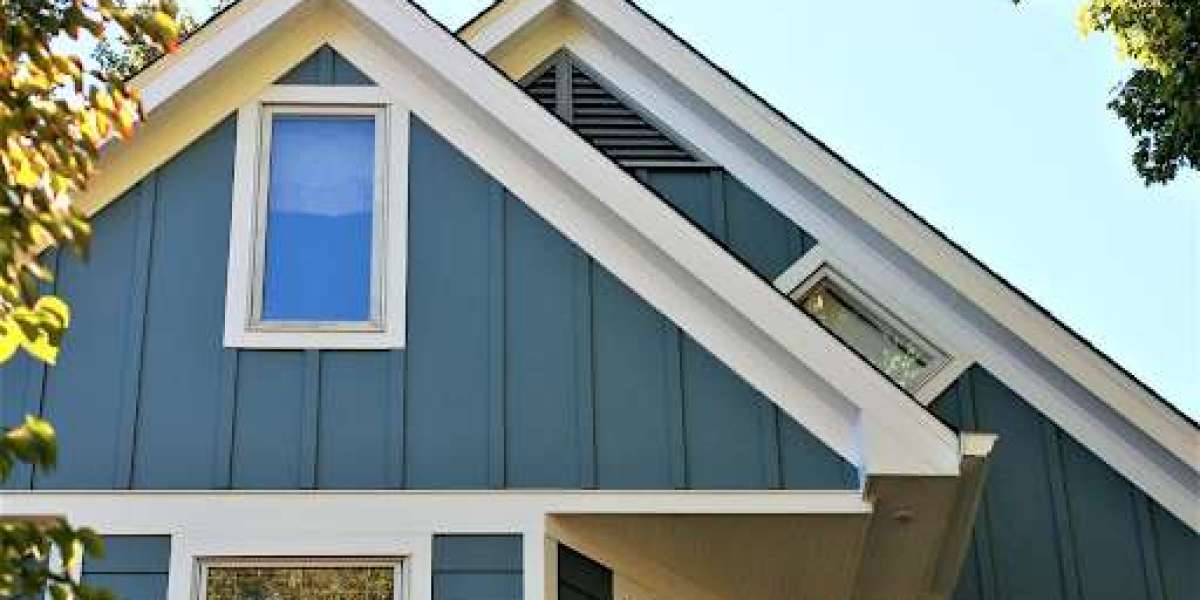When choosing the right siding for your home, durability, aesthetics, and low maintenance are key considerations. Hardie board siding, also known as fiber cement siding, has gained popularity for its exceptional performance in these areas. This comprehensive guide will explore the various aspects of Hardie board siding, including its composition, advantages, installation process, and maintenance.
Composition
Hardie board siding is made from cement, cellulose fibers, and sand. This composition gives it unique characteristics that set it apart from other siding materials. The mixture is cured under high pressure and temperature to create a robust and durable product that can withstand various weather conditions.
Advantages of Hardie Board Siding
- Durability: One of the primary reasons homeowners choose Hardie board siding is its exceptional durability. It is resistant to rot and pests and can withstand harsh weather elements such as wind, rain, and hail. This makes it a long-lasting solution for protecting your home's exterior.
- Low Maintenance: Hardie board siding requires minimal maintenance compared to traditional wood siding. It does not warp, crack, or rot over time, reducing the need for frequent repairs. Additionally, it is resistant to insects, which can be a common issue with wood siding.
- Fire Resistance: Hardie board siding is non-combustible, unlike some other siding materials. This makes it an excellent choice for homeowners in areas prone to wildfires or those seeking added fire protection.
- Versatility in Design: Hardie board siding comes in various styles, textures, and colors, allowing homeowners to achieve the desired look for their homes. Whether you prefer a traditional or modern aesthetic, the Hardie board can be customized to suit your design preferences.
- Paint Retention: The surface of Hardie board siding holds paint exceptionally well. This means that the color of your siding will remain vibrant for an extended period, reducing the need for frequent repainting.
Installation Process
- Preparation: Before installation begins, the existing siding must be removed, and the house's exterior should be inspected for any structural issues.
- Weather Barrier Installation: A weather-resistant barrier, such as house wrap, is applied to the exterior walls to protect against moisture infiltration. This barrier helps to prevent water damage and ensures the longevity of the siding.
- Flashing Installation: Flashing is installed around windows, doors, and other openings to prevent water from seeping behind the siding. Proper flashing is crucial for maintaining a watertight seal and protecting the structure from potential water damage.
- Trim Installation: Trim pieces are installed at corners, edges, and other transition points to create a finished and cohesive look. Properly installed trim enhances the overall aesthetic appeal of the siding.
- Hardie Board Installation: The Hardie board siding is then installed using corrosion-resistant nails or screws. It is important to follow the manufacturer's guidelines for installation, including proper clearances and spacing to allow for expansion and contraction.
- Sealing and Painting: Seams and joints are sealed to prevent water infiltration once the siding is in place. The hardie panel siding can then be painted in the desired color, adding a finishing touch to the exterior.
Maintenance Tips
- Regular Inspection: Periodically inspect the siding for any signs of damage, such as cracks or chips. Preventing more extensive problems can be achieved by making repairs as soon as possible.
- Cleaning: Clean the siding annually to remove dirt, mildew, and other debris. A soft brush or a low-pressure power washer can be used.
- Painting: If the paint shows signs of fading or peeling, consider repainting the siding to maintain its aesthetic appeal and protective properties.
Understanding its composition, advantages, installation process, and maintenance requirements empowers homeowners to make informed decisions when it comes to choosing the right hardie panel siding for their homes.
Conclusion
Hardie board siding offers a winning combination of durability, low maintenance, and design versatility. Whether you're building a new home or considering a siding replacement, TWD Supplies Hardie board is a reliable choice that can enhance the appearance and protection of your home's exterior.



